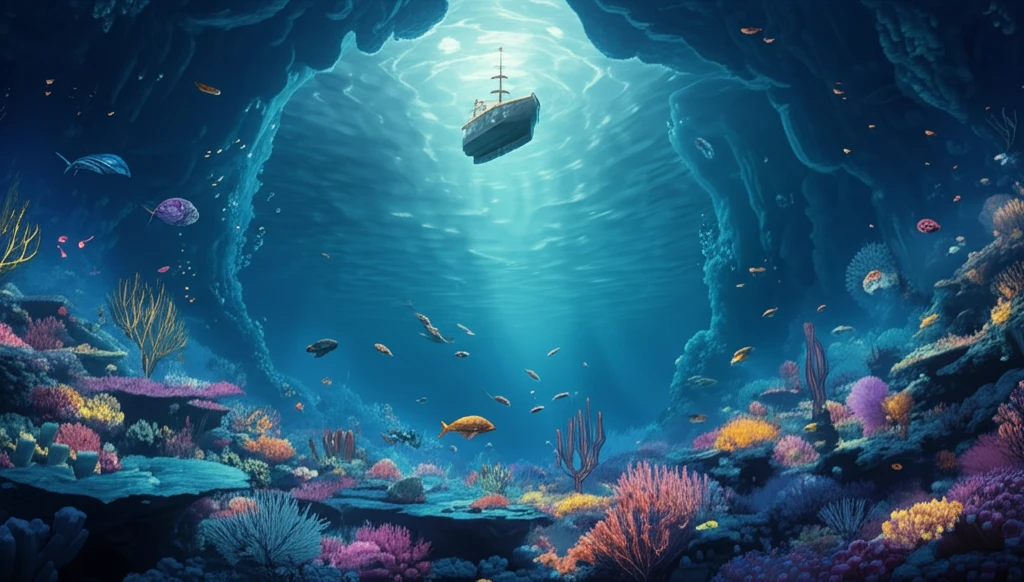
Decoding the Ocean Floor: How Acoustic Tech is Mapping Our Underwater World
"Dive into the innovative acoustic technologies transforming how we understand and classify the seafloor, vital for marine conservation and sustainable ocean management."
Understanding the ocean floor is paramount not just for scientific curiosity, but also for effective marine management, environmental protection, and resource exploration. Traditional methods of seafloor study, like direct sampling, are often costly, time-consuming, and disruptive to marine habitats. This has spurred the development of advanced acoustic technologies that allow us to 'see' and classify the seabed from a distance, providing detailed information without physical disturbance.
Acoustic seafloor characterization uses sound waves to map and analyze the seabed, identifying different sediment types, geological formations, and even underwater objects. These technologies range from simple singlebeam echosounders to sophisticated multibeam and sidescan sonar systems. The data collected helps in various applications, from creating detailed bathymetric maps to assessing the health of marine ecosystems and locating potential underwater hazards.
The evolution of acoustic methods has significantly enhanced our ability to monitor and manage marine environments. These technologies offer rapid data acquisition, ease of automation, and cost-effectiveness compared to traditional methods. Moreover, they are non-invasive, making them ideal for studying sensitive underwater ecosystems.
Acoustic Toolkit: Exploring the Different Types of Sonar

The world of underwater acoustics is diverse, with each type of sonar system offering unique capabilities for seafloor characterization. These systems are selected based on the specific goals of the investigation, such as detailed seafloor mapping, sub-bottom profiling, or estimating sediment properties.
- Singlebeam Echosounders: The workhorses of depth measurement. Singlebeam echosounders, traditionally used for navigation, emit a focused sound pulse directly downward. By measuring the time it takes for the signal to return, they accurately determine the depth. While basic, they've been adapted to provide insights into seabed roughness and hardness by analyzing the returning echo.
- Multibeam Sonars: High-resolution mapping masters. Multibeam sonars take seabed mapping to the next level. They emit multiple beams of sound, creating a wide swath of coverage with each pass. This allows for detailed 3D models of the seafloor, revealing intricate features and variations in sediment type.
- Sidescan Sonars: Imaging the seafloor landscape. Sidescan sonars provide detailed images of the seafloor by sending out acoustic waves to the side. The strength of the returning signals creates a 'picture' of the seabed, highlighting textures, objects, and changes in material. This is particularly useful for identifying shipwrecks, pipelines, and other underwater structures.
- Sub-bottom Profilers: Peering beneath the surface. To understand the layers beneath the seafloor, sub-bottom profilers use low-frequency sound waves that penetrate the sediment. By analyzing the returning signals, geologists can map the different layers of sediment and identify buried structures.
The Future of Ocean Mapping: A Clearer Picture of the Seabed
As technology continues to advance, acoustic seafloor characterization will play an increasingly vital role in understanding and managing our oceans. By combining different acoustic techniques and refining data processing methods, scientists and policymakers can gain a more detailed and accurate picture of the seabed, leading to better conservation efforts, more sustainable resource management, and a greater appreciation for the complexities of the underwater world. This is a journey of discovery, one sound wave at a time.
